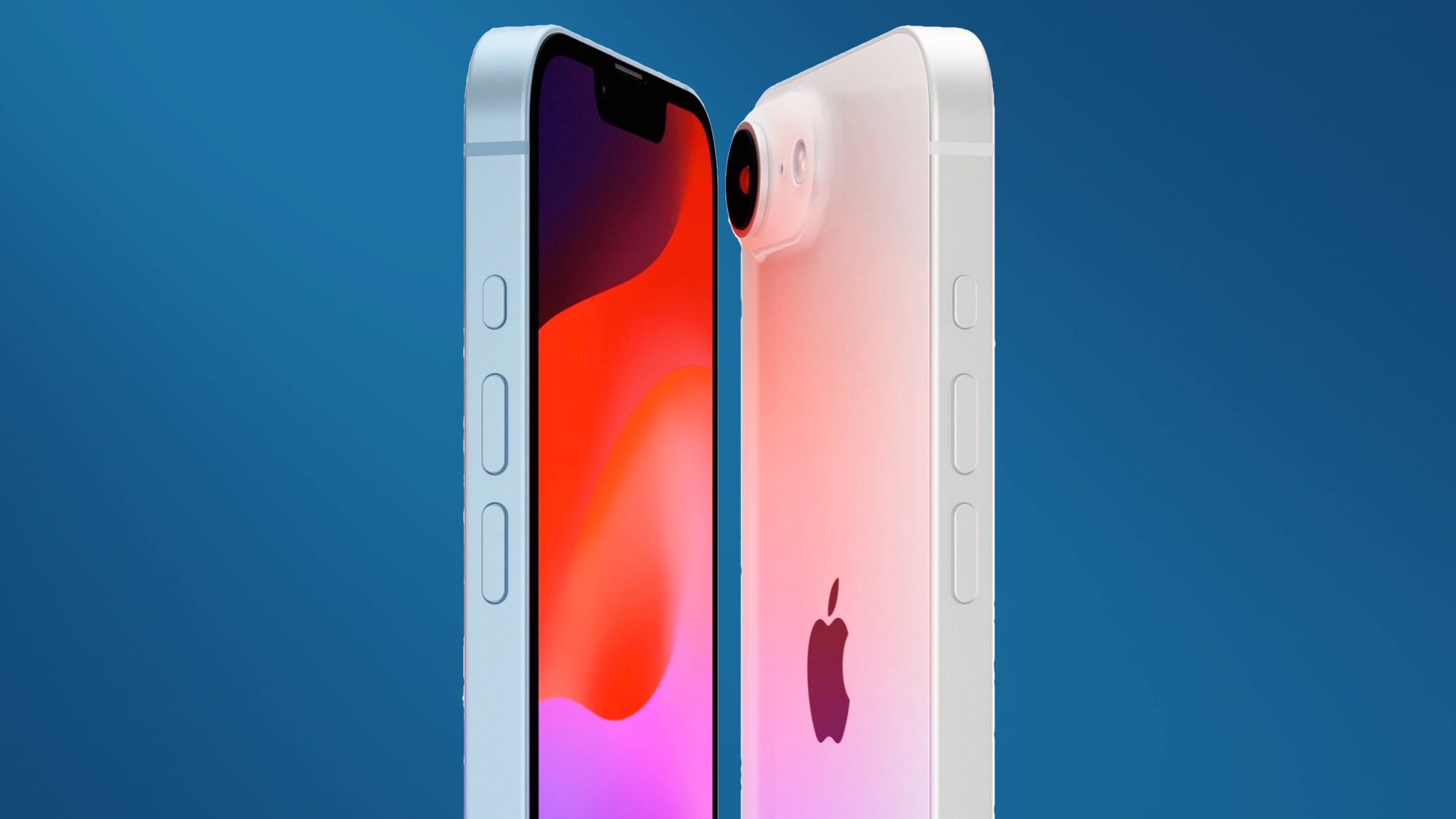iPhone SE 4 Plus could be the big-screen phone of 2025 — here's why
Big screen for a small price

If you’re in the market for a small phone, your options are limited to say the very least. No matter how many times phone companies start offering smaller handsets, they inevitably pull them from shelves within a few years — leaving larger 6+-inch displays as your only serious option. The 4.8-inch iPhone SE has been the exception for a long time, offering a smaller build for an equally-small price tag,but now it sounds like that too will be getting a growth spurt.
According to a new rumor, the iPhone SE 4 could come in two different sizes. The first is a 6.1-inch device, which rumors have long-claimed will have a similar look to the iPhone 14. The second, which we’re only just hearing about, could look like an iPhone 14 Plus — complete with a super-sized 6.7-inch screen. Combined, both those things could be the final nails in the coffin housing small phones.
At the very least it’s likely to put an end to the small iPhone for the foreseeable future — and it’s something we all should have seen coming.
iPhone SE’s redesign is a good thing — even if it means it’s getting bigger

The one thing you need to remember about the iPhone SE is that the design dates back to 2007. It is more or less the same shape as the iPhone 8, which debuted alongside the full-screen iPhone X and ended up as the final iPhone without that edge-to-edge display. Well, the final one that didn’t bear the “SE name” at any rate.
That design is quite dated at this point, and you’ll struggle to find a phone that doesn’t have an edge-to-edge display of some form. There may be display notches, or hefty bezels, but you won’t find the gargantuan borders like those surrounding the iPhone SE’s 4.7-inch display. Frankly, adopting a design similar to the flagship iPhone is long overdue, and it’s unclear why Apple has taken so long to make that change.
The difference between a 4.7-inch display and 6.1-inches seems like a lot, and in terms of screen space it is. But the phones themselves? There’s not a huge amount of difference between them all. The iPhone SE 3 measures 5.45 x 2.65 x 0.29 inches, while the iPhone 14 is 5.78 x 2.82 x 0.31 inches.
If the iPhone SE 4 adopts the exact same dimensions as the iPhone 14 it will see some growth. That extra third of an inch in height isn’t unnoticeable, and could still be considered a large amount to people who prefer smaller devices. But it isn’t quite as much as the extra 1.4-inches of screen space might have you believe.
Having that extra screen space means you have more room for watching movies, playing games and fitting apps on your home screen. And while the small handed people out there might struggle to reach all four corners of the screen with one hand, you get a lot more out of your phone as a result of the full screen design.
Plus, at the very least, it means the new cheap iPhone will finally have a sleek and modern look befitting an iPhone. Not a dated design that makes the phone look cheap and, frankly, rather tacky.
It was only a matter of time before we saw iPhone SE Plus anyway

There was one point in ancient computing when Apple was a cheaper alternative. Back in the ‘90s one of its slogans was “Does More, Costs Less, It’s that simple”. Things have changed over the past 30 years, and it’s been clear for some time that Apple products rarely, if ever, “cost less."
A larger screen iPhone for less than the price of a flagship iPhone? I could see some people being interested in that.
But being a premium product doesn’t mean demand for a low cost alternative goes away, and that’s the niche products like the iPhone SE and iPad 10 fill.
But having a low-cost phone doesn’t necessarily mean that everyone on a smaller budget will be satisfied. While you can’t please everyone, sometimes it pays to have more variety on store shelves and see what people naturally gravitate towards. This is why Apple has offered devices like the iPhone 13 mini or the iPhone 16 Plus, because they offer an iPhone experience in a slightly different form factor — which some may find more comfortable to use.
Admittedly those aren’t the best examples. Apple stopped selling the iPhone mini after just two generations, likely down to poor sales, and replaced it with the Plus models. Sales for those larger models have also been rather weak the past few years, and rumor is that Apple will replace the iPhone 17 Plus with a thinner and lightweight iPhone 17 Air instead.
Still, experiments like that seemed to show that there isn’t that much of a market for smaller phones, despite how loud people can be about it. Likewise, the market for larger phones that offer entry-level features isn’t all that great either. Apparently, iPhone fans would rather pay more for an iPhone 16 Pro Max and get their large phone with extra features. But what about if they were given the option to buy a larger phone for a much lower price?
Normally, a larger phone costs more, for obvious reasons, and I have no doubt that an iPhone SE Plus would cost more than an iPhone SE 4. But, assuming the iPhone SE will cost around $500 like the other best cheap phones, a larger version could cost $600 — or $200 less than a regular iPhone 16. And it would be $500 less than the iPhone 16 Pro Max.
A larger screen iPhone for less than the price of a flagship iPhone? I could see some people being interested in that. Even if it’s an iPhone SE with all the usual compromises and sacrifices that entails — like having just a single rear camera.
Bottom line

While there’s a chance the iPhone SE Plus doesn’t come to fruition — since online rumors can’t always be trusted — it’s something I’d like to see happen next year. We may already see the standard iPhone SE 4 grow in size, thanks to a new iPhone 14-inspired design, and it makes sense that Apple might try something a little different — and offer that low-cost big phone for those that want it.
Will people actually buy it? That’s not something we can predict, but I can see the appeal of having a big screen for less. It worked for the OnePlus 12R, and that didn’t have the advantage of being stocked at the nearest Apple Store.
Plus, since the demand for smaller phones has more or less cratered, it doesn’t hurt to try and go in the opposite direction. So long as Apple sticks to that 6 to 7-inch sweet spot that most other flagship phones have hunkered down in. And hey, if it doesn’t happen alongside the iPhone SE 4, then fingers crossed it happens with iPhone SE 5.
More from Tom's Guide
Sign up to get the BEST of Tom's Guide direct to your inbox.
Get instant access to breaking news, the hottest reviews, great deals and helpful tips.

Tom is the Tom's Guide's UK Phones Editor, tackling the latest smartphone news and vocally expressing his opinions about upcoming features or changes. It's long way from his days as editor of Gizmodo UK, when pretty much everything was on the table. He’s usually found trying to squeeze another giant Lego set onto the shelf, draining very large cups of coffee, or complaining about how terrible his Smart TV is.
